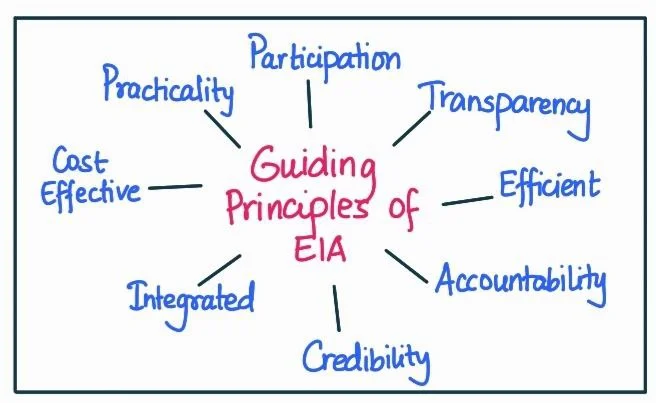Answer:
Approach:
- Introduction: Write about Draft EIA notification 2020 in brief.
- Body: State the differences between EIA Notification 2020 and 2006.
- Conclusion: Conclude your answer with concerns over weakened safeguards and public engagement.
|
Introduction:
The draft Environment Impact Assessment (EIA) Notification, 2020 proposed by the Ministry of Environment, Forest, and Climate Change (MoEFCC) aims to replace the existing EIA Notification from 2006. The draft introduces significant changes that have sparked debates and concerns. Understanding the differences between the two notifications is crucial in assessing the potential implications on environmental governance and public participation.

- Post-Facto Approval:
- Existing Notification: Environmental clearances need to be obtained before the commencement of a project.
- Draft Notification: Allows for post-facto approval, meaning projects can be regularized even if they have started construction without securing prior environmental clearances.
- Public Consultation Process:
- Existing Notification: Requires a 30-day period for the public to submit responses during a public hearing for any project seeking environmental clearance.
- Draft Notification: Reduces the public consultation period to 20 days, potentially limiting the time for meaningful participation and adequate preparation of views, comments, and suggestions.
- Compliance Report Submission:
- Existing Notification: Project proponents are required to submit compliance reports every six months, demonstrating adherence to the terms of permission.
- Draft Notification: Changes the frequency of compliance report submission to once a year, which may reduce the monitoring and reporting of project activities.
- Categorization and Transparency:
- Existing Notification: Does not explicitly mention the categorization of projects as “strategic” or limit public access to information.
- Draft Notification: Empowers the central government to categorize projects as “strategic” and states that no information related to such projects will be placed in the public domain. This reduces transparency and public scrutiny.
- Exemptions and Scrutiny:
- Existing Notification: New construction projects exceeding 20,000 square meters require detailed scrutiny by the Expert Committee, along with EIA studies and public consultation.
- Draft Notification: Increases the threshold to 1,50,000 square meters, exempting a larger number of construction projects from detailed scrutiny and reducing the scope of EIA studies and public consultation.
Conclusion:
The draft EIA Notification, 2020 diverges from the existing EIA Notification, 2006 by allowing post-facto approval for projects, reducing the time for public consultation, altering the frequency of compliance reports, and granting discretionary powers to the central government for categorizing projects as “strategic.” These changes have raised apprehensions regarding weakened environmental safeguards and limited public engagement, emphasizing the need to uphold the principles of sustainability and transparency in environmental decision-making.
